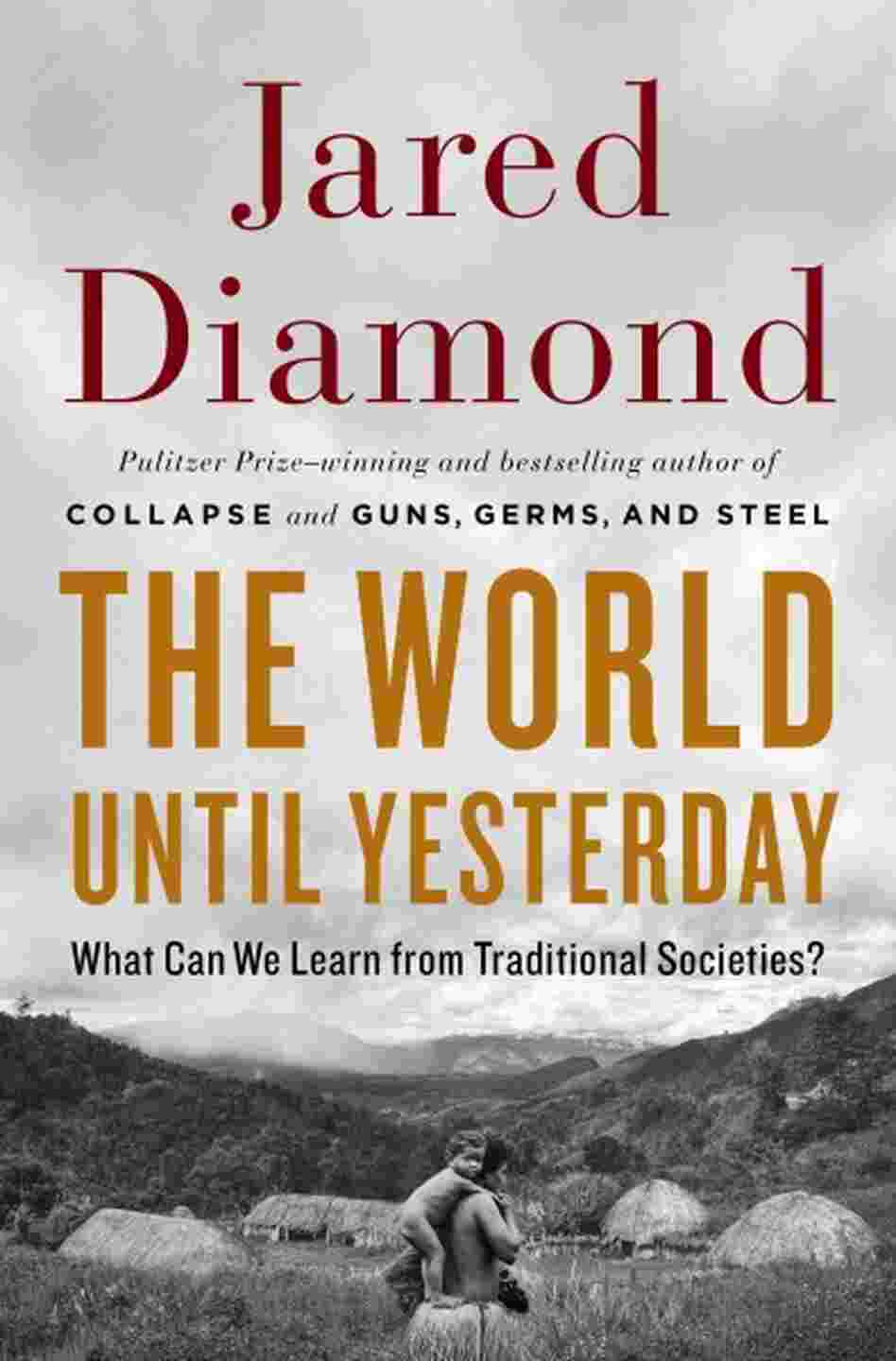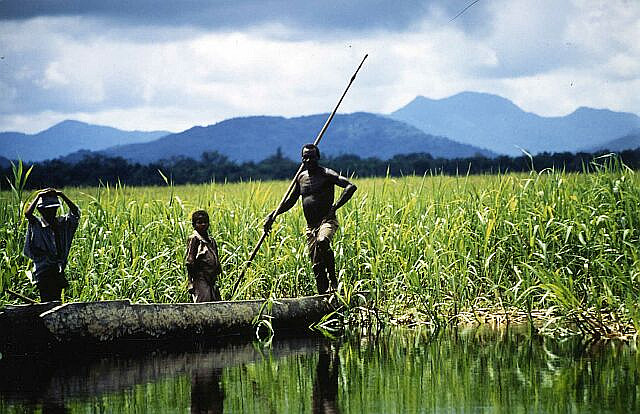
In this book, Jared Diamond reveals how tribal societies offer an extraordinary window into how our ancestors lived for millions of years and how they provide unique, often overlooked insights into human nature. Diamond argues the West achieved global dominance due to specific environmental and technological advantages, but Westerners do not necessarily have superior ideas about how to live well. Michael Yorke is impressed by the book’s beautifully crafted prose style but has doubts about its methodological validity.

The World Until Yesterday: What Can We Learn from Traditional Societies? Jared Diamond. Allen Lane. December 2012.
Jared Diamond is the Pulitzer prize-winning author of Guns, Germs and Steel: The Fates Of Human Societies and the international bestseller Collapse: How Societies Choose to Fail or Succeed. In his latest book, The World Until Yesterday, Professor Diamond has taken on the huge and provocative subject of who has got it right: the technologically advanced westerners or the small-scale egalitarian hunter-gatherer groups of 50 to 100 individuals living in direct contact with nature.
He confronts head on the issues that haunt the romantics who want to find a better lifestyle. Why do holidaymakers head off on tribal adventure tours at great cost in search of the exotic and possibly idealistic back-to-nature lifestyle? Until very recently in human evolutionary history we all lived in small-scale traditional cultures, hence the book’s title, The World Until Yesterday. It is the story of a personal discovery that Diamond first confronted some fifty years ago when, as an ornithologist and evolutionary biologist, he was in the New Guinea Highlands and his indigenous helpers introduced him to an other way of thinking, behaving and understanding the world around themselves.
However, a scientist at heart and always eager to question, Diamond turns to cultural anthropology to understand the inner workings of the indigenous mind. He does not simply share his discoveries with us through personal anecdotes; he forces the reader to question our assumptions about our own way of life and that of small-scale societies.
His subject takes him deep into the Sir James Frazer’s analytical style in The Golden Bough (1894) where it was proposed that mankind progressed from magic through religious belief to scientific thought. Likewise Diamond plucks examples and anecdotes from a wide range of human societies, from New Guinea, Amazonia, the Andaman Islands, the Kalahari Desert, Tanzania, Sudan, Venezuela, America, Europe and a multitude of assorted cultures to make his ideas more elucidating and fascinating.

Many of his stories are too long, insightful and ornate, to repeat here. He does report that when New Guinean tribesmen talked about how they reacted to first contact with Europeans “two discoveries [convinced them] that Europeans really were human…feces scavenged from their campsite latrines looked like typical human feces…and that young New Guinean girls offered to Europeans as sex partners reported that Europeans had sex organs and practiced sex much as did New Guinea men” (p. 58-9). As with all good stories or anecdotes, this tells me more about New Guinean society and European sexual attitudes of the 1930s than about the first contact situations that he is analysing; their scatological fascination and the New Guinean acceptance and significance of everyday sexuality.
This is a book so rich with anecdotes and stories that it leads me to question what he says without coming to any great conclusions. Like all good books it has a beautifully crafted prose style and is a straightforwardly written common-sense treatise. It does not tell us what to think, but rather, what to think about. At the most basic level it appeals to the popular and cynical notion that perhaps we have got it all wrong and the so-called ‘primitive’ mind is in touch with a deeper and more fundamental truth about life’s conundrum. It then leads us to question some of the fundamentals of our western lifestyle like conflict resolution, warfare, child-rearing, care of the elderly, religion, diet and disease.
He splits his analysis into either anecdotes about the tribal people he studied in New Guinea, or more rigorous sections that discuss the functions of religion or the types of political changes that occur when societies grow from a few hundred hunter-gatherers to millions of specialized W.E.I.R.D citizens: Western, Educated, Industrialised, Rich, and Democratic (not that we are all as democratic as we would like to think).
At the core of the book is Diamond’s idea that modern life is “W.E.I.R.D” – a theme he sets up on page 9 and returns to throughout the book. In 480 pages he attempts to provoke and make the readers question every assumption, so that he or she may work out the answer for themselves. Frustratingly, he does not provide the answers, but asks some major and inspiring questions. It is not a book of profound academic theoretical analysis and obscurantist anthropological jargon. It is a book of extensive personal experience and insight derived from visiting and studying remote forest villages of highland New Guinea over fifty years.
Here his personal insights and stories bring his intended meaning and analysis to life. In trying to understand how and why trade, marriage, neighbourliness and war can so often be interdependent, he says “we will have to content ourselves with anecdotes”. During the famous Dani wars of Highland New Guinea, filmed by Robert Gardner (“Dead Birds” 1963), Diamond tells complex tales: “Societies tend to fight the people they marry and marry those they fight, to raid the people with whom they trade and to trade with their enemies…Trade and marriage give rise to disputes for members of small-scale societies, just as for modern states…Disputes over quality of “goods”, e.g. adultery, spouse abandonment, divorce, or inability or refusal to cook or garden or fetch firewood produce demands for refund, but the demand is refused…or the payment received has already been traded away or, if it was a pig, eaten. Any consumer, business owner, exporter, or importer…will recognize analogies with the problems facing traders in modern states” (p. 166). It certainly brings the subject to life, but I am not sure that it helps to explain it.
Despite his subtitle, What Can We Learn From Traditional Societies? Diamond takes a carefully balanced view and is under no illusions about the W.E.I.R.D. benefits of technological medical care and the rule of law. He makes clear that we were not originally intended for our modern diet that leads to non-communicable diseases like obesity, high blood pressure, diabetes and heart disease. He also points out the dysfunctionality of our children having so many toys that limit their creative imaginations. Although we can learn from tribal lifestyles, infanticide, euthanasia of the elderly, and vengeance killings in the name of retribution rather than legal justice, to name a few, are all good reasons why traditional people will happily abandon their lifestyle when they are exposed to the W.E.I.R.D. way-of-life. Overall, our way may be better, but it is still rewarding to dwell on these issues in a book that is so accessible and well written.
On the continuum of science books for the popular reader, The World Until Yesterday lies towards to the ‘pop’ end. Although it is not easy to decide who Diamond’s target readers are. As an ethnographic filmmaker and as an anthropological mythopoeicist, who believes in the power of a good storyline, I enjoy this style, but as a theoretical anthropologist I doubt its methodological validity. What I do know is that film and anecdotes lend imaginative life to dry analysis. At the bottom line some academic anthropologists have criticised it as “ethnology by anecdote”. Also some indigenous leaders in West Papua and Stephen Corry of Survival International, the indigenous rights organisation, have objected to Diamond’s characterisation of tribal societies as violent. However, I still recommend you enjoy this book. It will help you decide for yourself whether academics or good storytellers should rule the world.
——————————————————————————————-
Dr. Michael Yorke lectures in Practical Ethnographic Film in the Department of Anthropology at University College London and works on the Royal Anthropological Institute Film Committee. Before that he was an award-winning freelance TV documentary producer for Channel Four, ARTE, National Geographic and Discovery Channel. He also worked for a decade on the BBC Ethnographic Unit. His early anthropological doctoral and post-doctoral research work for SOAS was on the tribal ‘adivasi’ communities of central India. Prior to academic life he was a professional photographer. Read more reviews by Mike.






